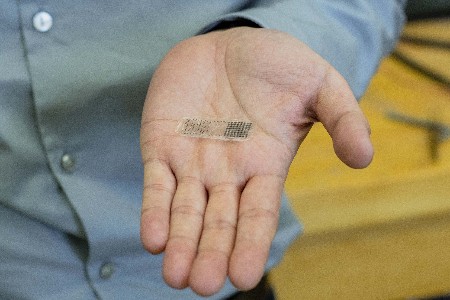Where was this technology when I broke both of my legs back in 1969 and spent 18 months recovering? What a difference it would have made.
It is well known that applying electricity to a fracture speeds up bone healing. But implementing such a therapy in the past would involve externally powered devices and implanted electrodes. That’s not what has been invented at the University of Wisconsin-Madison.
What a research team there has developed is an implantable nanoelectronic device that speeds up bone repair and once the fracture is healed dissolves away with no complications.
Overcoming the potential challenges of developing such an implantable includes countering the potential for infection or rejection. The team led by Xudon Wang, a professor of materials science and engineering, in recognizing these impediments, as a result, has developed what is a thin-film triboelectric nanogenerator they call FED (fracture electrostimulation device) made from inert materials that don’t cause the body to react while generating electricity from the piezoelectric effect of the body’s own mechanical movements. The electronic circuitry is imprinted on a polylactic-co-glycolic acid substrate. It has been tested on broken tibias in rats and has demonstrated significant improvements in bone repair time. And once healed the device has shown it can successfully dissolve.
If you are not familiar with piezoelectric devices, there are numerous applications under development taking advantage of their electricity generating capacity. Engineers have considered recharging vehicles through piezoelectric devices implanted in roadways. In Israel recently, researchers in Tel Aviv have developed a triboelectric nanogenerator called a TENG, to restore the lost sense of touch in an injured limb. In both these cases, it is natural movement that becomes the energy source. Wisconsin’s invention is just taking the same type of device and using it for bone repair.
But just how much movement are we talking about to yield the kind of electrical energy that would promote healing? Going back to my own injury which had my left leg in a cast from hip to foot, and my right leg in a walking cast, there were limitations to my mobility. Would a FED implanted in me back then have been effective? The researchers at Wisconsin have considered this issue and undeterred have recognized other mechanical movements in the body even when relatively immobile that could be used to generate electricity including changes to blood pressure or arterial pulsations.
And in my case, where I had multiple surgeries and bone grafts after the initial stabilizing of my left leg, implanting a FED would easily have been an option to help speed bone healing.
Wang and colleagues published the information about their triboelectric nanogenerator in Proceedings of the National Academy of Sciences back on July 5th, reporting that the healed bones in subject rats showed the mineral density and flex strength similar to that found in healthy animals.
So how long will a FED hang around in the body after a bone heals? Wang reports that the bioresorbable materials used for the FED can be modified and customized to the length of requirement based on the complexity of the breakage.
















